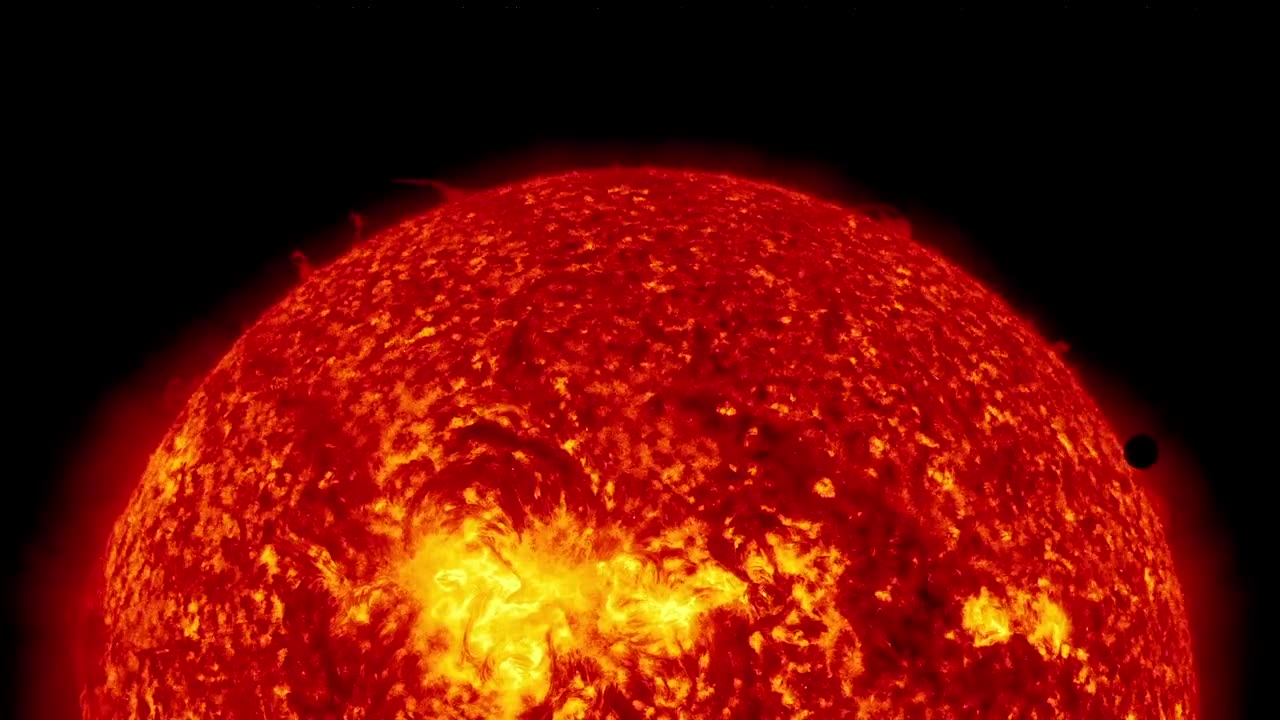Premium Only Content

NASA | SDO's Ultra-high Definition View of 2012 Venus Transit
On February 11, 2010, the Solar Dynamics Observatory (SDO) was launched, marking a remarkable achievement in spacecraft design for solar study. Over its intended five-year mission, SDO's focus has been to delve into the intricacies of the sun's atmosphere and magnetic field. By doing so, it aims to enhance our comprehension of the sun's impact on Earth's atmospheric chemistry and climate dynamics.
A testament to its technological prowess, SDO captures imagery with a resolution eight times finer than high-definition television. This endeavor yields an impressive daily data output of over one terabyte. One of SDO's notable achievements occurred on June 5, 2012, when it documented an extraordinary solar event—the transit of Venus across the sun's surface. This phenomenon transpires in pairs, spaced eight years apart, with intervals of either 105 or 121 years between pairs. The prior transit took place in 2004, and the subsequent occurrence is not anticipated until 2117.
The captivating visuals presented here are assembled from diverse wavelengths of extreme ultraviolet light and a segment of the visible spectrum. In this composition, the sun is portrayed in various hues: the red shade signifies the 304 angstrom ultraviolet, the golden hue corresponds to 171 angstrom, the magenta tint showcases 1700 angstrom, and the orange tint represents filtered visible light. The 304 and 171 angstrom views reveal the sun's atmospheric layer, which remains hidden from our perception within the visible spectrum.
-
 LIVE
LIVE
The Bubba Army
2 days agoShould RaJa Jackson Be Arrested? - Bubba the Love Sponge® Show | 8/25/25
739 watching -
 LIVE
LIVE
FyrBorne
11 hours ago🔴Warzone M&K Sniping: Builds So Strong They Think I'm Hacking
594 watching -
 4:23
4:23
Blackstone Griddles
14 hours agoEasy Salmon Dinner on the Blackstone Griddle
392 -
 8:10
8:10
WhaddoYouMeme
1 day ago $0.01 earnedChristians, Before You See “Testament”, Watch this!
5452 -
 8:42
8:42
Freedom Frontline
13 hours agoDurbin’s Trump Smear Video Just HUMILIATED Him in the Senate
42 -
 10:56
10:56
ariellescarcella
10 hours agoThe Shocking Divide Among College Voters Sparks Worry For America
733 -
 13:09
13:09
Forrest Galante
9 hours agoWildlife Expert Reacts To Deadly Australian Animal TikToks
25.7K3 -
 12:08
12:08
Zoufry
1 day agoThe Mystery of Gaddafi's Final 24 Hours
5.31K5 -
 18:25
18:25
Liberty Hangout
13 days agoAnti-Ice Demonstrators Love Poop!
38K47 -
 9:39
9:39
MattMorseTV
15 hours ago $0.99 earnedVance just DROPPED a BOMBSHELL.
35.6K63